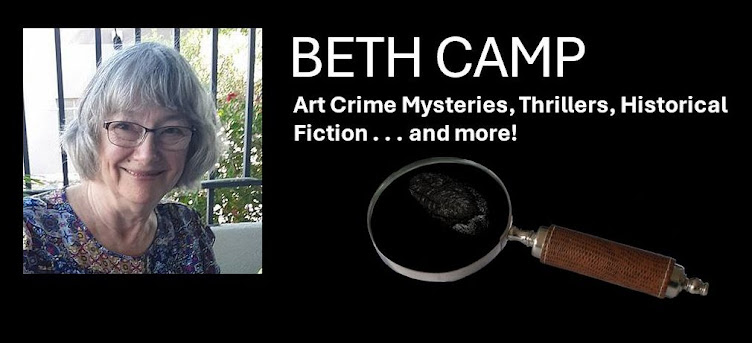Let me just say that occasionally submitting my work-in-progress to The Internet Writing Workshop via the NOVELS-L list is such a treat. Writers submit a chapter at a time . . . slowly . . . and write a critique of someone else's submission. Generally, folks do a minimum of two crits a month to stay active. Most do much more.
I'm such a coward that I do submit slowly and out of sequence, on the premise that chapters must stand on their own. But the feedback is so diverse and helpful, ranging from structural to grammatical, truly informed reader response, that I continue to sub.
The question that came with this week's crits is this: How does a writer of historical fiction stay true to the 'facts' and yet tell the story?
The story, the characters and their conflicts, the action, the plot points -- these are all primary, front and center onstage, so to speak. But those facts, the bones that may hold the story together for setting, actual physical reality, and maybe historical persons as well, these facts need to be as accurate as possible.
 |
| The Prince Rupert, 1857 Just off Resolution Island near Baffin Flickr |
After much research, I found that the peak years for drift ice in Hudson Strait were 1843-1845, not 1842. But I want those ice floes and drift ice in my story because they are so beautiful and speak to the reality of travel in a wooden ship. Is it OK to tweak the dates?
I've never been to Baffin Island or Hudson Strait, but one of my critters has. Instead I use the internet to read academic articles, search out videos on Youtube and pictures on Flickr to get a sense of what x was like.
 Which brings me to bear tracks. As my main character travels the wilderness of Canada, I want there to be bears. Shouldn't there be grizzly bears and polar bears?
Which brings me to bear tracks. As my main character travels the wilderness of Canada, I want there to be bears. Shouldn't there be grizzly bears and polar bears? Yes, but now I need much more -- where these bears live, how they migrate, mate, and what their interactions with people are. I want more stories people tell about these bears, folklore and, yes, images. Like this one, found on Facebook (can't trace the source as it's been shared over 50,000 times on FB and Twitter), but after seeing this image, I cannot forget the awe-ful reality of the size of this Grizzly bear paw!
I haven't answered the question. Instead, my story unfolds slowly, maybe drifting like the ice, as I continue writing and researching and revising. Each morning, I play with words and images and ideas as the 'facts' recede into the background, and, hopefully, my story comes to life.
May 2015 bring you good writing and good reading!

I sympathize, Beth. How much reality does fiction need? Historical fiction sometimes seems like an oxymoron, doesn't it? And yet I do believe there's space in between facts for story to filter through. The way I've seen authors I respect do it (Hilary Mantel comes to mind) is to include an explanation in an afterword: "The peak years for drift ice in the Hudson Strait were [x,y,z], not [a,b,c] as mentioned in this story," or something like that. Maybe that could work for you too? Either way, the project sounds fascinating, and I'm sorry I'm missing out on your submissions in IWW... I need to get back to Novels-L soon :)
ReplyDeleteHappy 2015!
Guilie @ Quiet Laughter
Always good to hear from you, Guilie. Yes, I do like Hilary Mantel, and I will recheck her afterword, which I do use as well. Maybe there will always be a gap between what once was and the story, and if I work to portray events and settings as accurately as possible, the reader will forgive the gap. Do you remember that sign in the London tube? "Mind the gap!" Hope to see you back on Novels-L. Remember, only 2 crits a month to stay current . . .
Delete